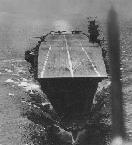mdiehl
Posts: 5998
Joined: 10/21/2000
Status: offline

|
quote:
Let me try to rephrase. It seems Mr. Diehl seems to be saying, if the result of the game is not in line with what happened historically, then the game is broken, and not worth playing. I was of the understanding that he was saying, to paraphrase "If the Japanese player does better then what happened historically, in any particular degree, then the game is not true to what it should be."
If this was not what Mr. Diehl was saying, then I was incorrect in my post, and apologize.
It's not what I was saying. It's an old chestnut and forgive me for saying so but it is also an illogical one. If you desire that the game is "about WW2 in the PTO", then you've automatically constrained yourself to a logical premise that the strategic problems facing the combatants in the game should more or less resemble the ones of the real event. Likewise the ships, the aircraft, the soldiers, their technical capabilities, etc should all be accurately modeled. This leaves the players in the position of having to deal with the same overall strategic problems using the same general suites of equipment and, frankly, tactics. I say tactics because there are levels of detail to which players do not have access. PLayer's do not, for example, get to rearrange air combat doctrine such that the inferior Japanese 3-plane section switches to a 4-plane section. The USN seems not to have a capability to wish away their torpedo problems (and by the way it puzzles me that the Axis Fanboys seem to think it is fair to model this problem but not Japanese problems in technical maintenance of radios, radar and sonar, or the absence of a good ASW doctrine). So there are some things that we can't change by virtue of what's given in the game.
Essentially, players decide where to attack and with what, and where to defend and with what. To wit, long term strategic objectives and shorter term operational planning and execution. That is where the variation ... the deviation from history... lies. Insisting on historical accuracy in the production, technical, intelligence, tactical or training models does not straightjacket the players into waging the war exactly as fought.
Now, I understand that playing the Japanese does not appeal to Axis Fanboys if the Japanese can't win every surface combat, or if each Japanese pilot is not credited with 120 kills, 60 "officially confirmed," when the real world reality is more like 15-20, or where the Japanese seize Alaska and Hawaii, Australia and India. My response is that game has already been written. Several times really. There's GGPW, there's Pacific General, and boardgames like "Rising Sun" and "A World At War." None of these bear the slightest resemblence in terms of "look and feel" to WW2, either in terms of the general strategic picture, or in the routine results of battle-level events. They do, however, presume that Japanese pilots were in general superior (where they weren't), that their planes were superior (where they weren't), that the opposition was economically weaker than they were, that China is much easier to occupy than it really was, that India was an open void just waiting for the first IJN transport to show up and elevate the INC to power, etc. If you want a game that gives Japan that capability, why wait around for WitP? And if that were the goal of WitP, why would anybody purchase it? After all, said game is already available.
What do you do? Balanced victory conditions is my consistent target. But if you really want a game where each side has balanced capability, maybe you should play chess, or Go, or something else.
< Message edited by mdiehl -- 3/24/2004 4:04:02 PM >
_____________________________
Show me a fellow who rejects statistical analysis a priori and I'll show you a fellow who has no knowledge of statistics.
Didn't we have this conversation already?
|
 Printable Version
Printable Version















 ).seriously, the game looks like a lot of fun to me. And that is the most important thing for me, if combined with historical detail. Therefore, perfect
).seriously, the game looks like a lot of fun to me. And that is the most important thing for me, if combined with historical detail. Therefore, perfect
 New Messages
New Messages No New Messages
No New Messages Hot Topic w/ New Messages
Hot Topic w/ New Messages Hot Topic w/o New Messages
Hot Topic w/o New Messages Locked w/ New Messages
Locked w/ New Messages Locked w/o New Messages
Locked w/o New Messages Post New Thread
Post New Thread